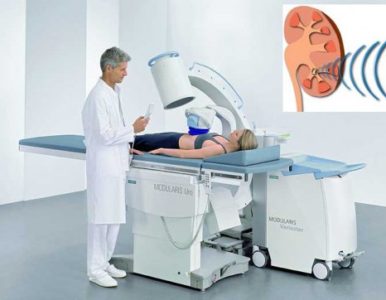Remote lithotripsy
Remote shockwave lithotripsy. This method presumes generating an acoustic wave outside the patient’s body and focusing it on a calculus in the kidney or ureter. The patient`s body in this case acts as a liquid mass because it consists of 80% water conducting the acoustic wave, which energy is absorbed by crystalline grid of the concrement. In most cases, the procedure is provided to outpatient without anesthesia; the fragments are expected to pass within 2 weeks after the procedure.
Remote lithotripsy
Advantages of remote lithotripsy:
- No necessity to enter into the human body;
- No necessity to hospitalize a patent;
- No necessity to administer an anesthesia;
- High efficacy of removal (destruction) of low-density calculi up to 1 cm in size.
Disadvantages of remote lithotripsy:
- Absence of quick effect;
- The necessity of repeat sessions in 30% of patients;
- The presence of renal colic and unpleasant sensations within a few days after the procedure;
- A risk of hematoma, especially when a wave passes through the kidney tissue;
- Low efficacy for calculi greater than 1 cm, high-density calculi, and in cases of long stay of calculi in the ureter, which may potentially require using other treatment options despite of already spent time and money.

